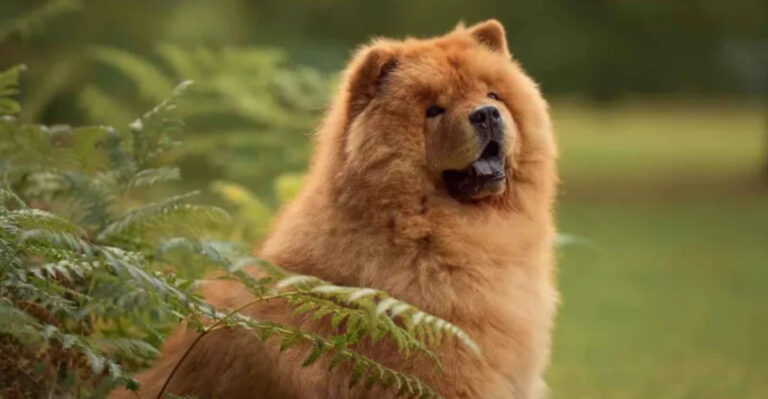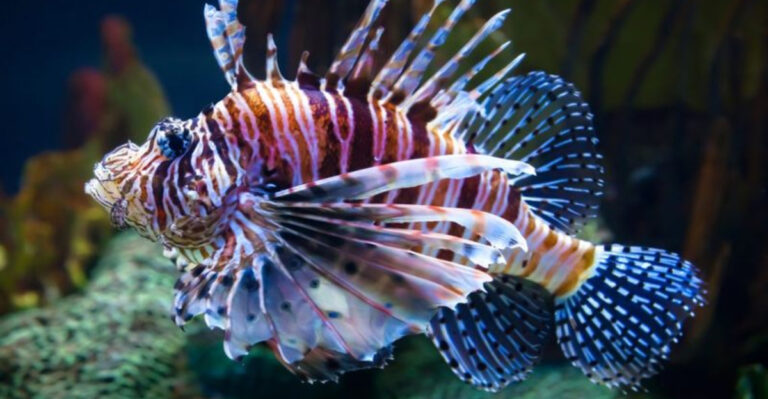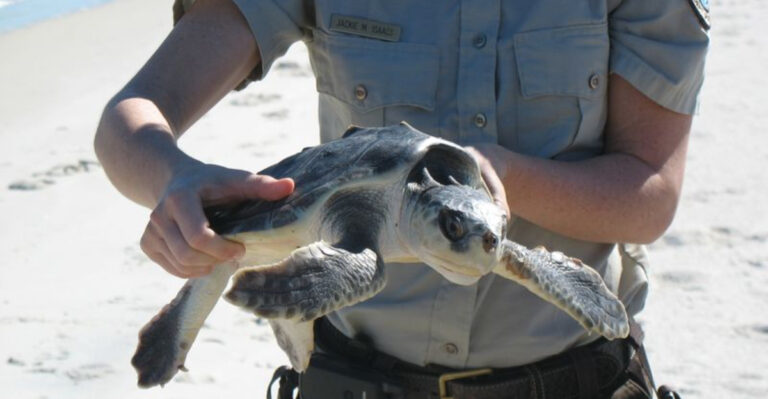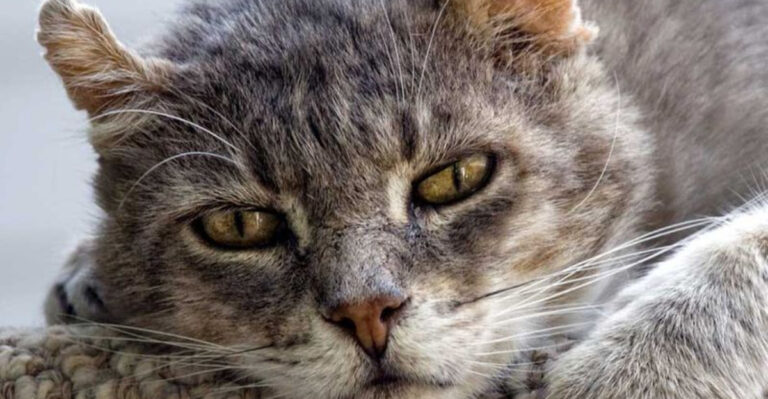11 Fascinating Facts About Pterosaurs And Their Flight Mechanics
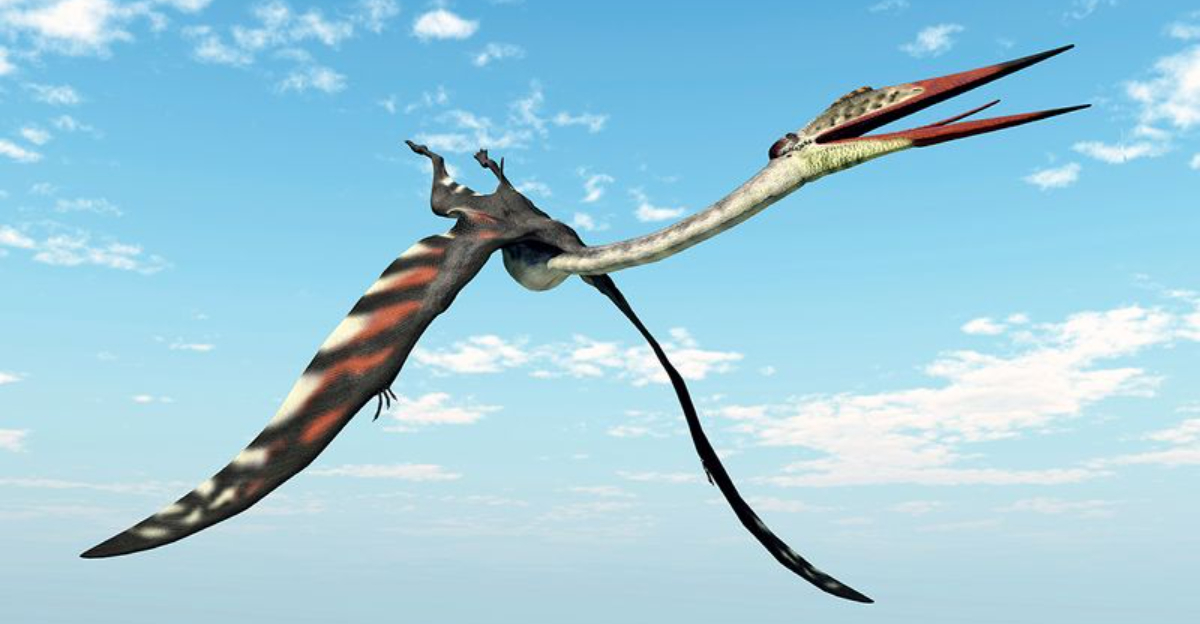
Pterosaurs were the original skysurfers of the prehistoric world, soaring through the skies long before birds were cool.
These fascinating creatures, not to be confused with dinosaurs, were masters of flight with skills that would impress even the most seasoned pilots today.
From their unique wing structures to their aerodynamic bodies, every aspect of their design was honed for the air.
So, let’s embark on an exploration of how these ancient aviators conquered the skies and uncover some intriguing facts about their existence.
1. Pterosaur Wing Structure
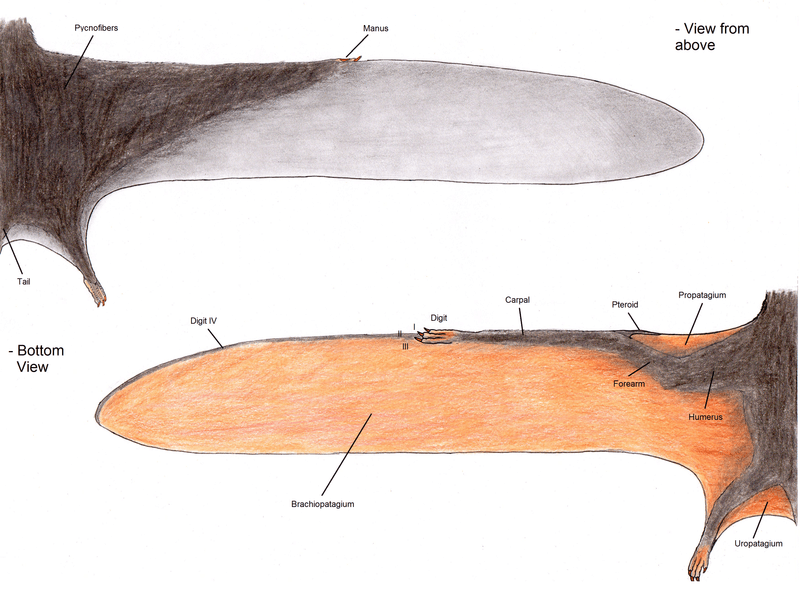
Pterosaur wings were unlike anything you’d find on modern-day birds or bats. Picture this: a single elongated finger, much like the index finger of a jazz musician stretching beyond belief.
This finger supported a vast membrane, creating a wing that was both lightweight and flexible. This unique structure allowed pterosaurs to glide efficiently over long distances, minimizing energy usage.
Their wings were a marvel of evolutionary engineering, tailored to catch the slightest breeze and translate it into graceful motion. These wings were not just for show; they were functionally designed for both power and precision.
The membrane consisted of multiple layers of skin, muscle, and fibrous tissue, granting them incredible control over their flight. This allowed them to perform complex aerial maneuvers, making them the acrobats of the prehistoric skies.
Imagine a creature capable of swooping down like a fighter jet, then pulling up with the elegance of a ballerina. So, the next time you see a bird, remember its ancient cousin, the pterosaur, and its extraordinary wings. They weren’t just flying; they were mastering the art of flight.
2. Pterosaur Diet And Hunting
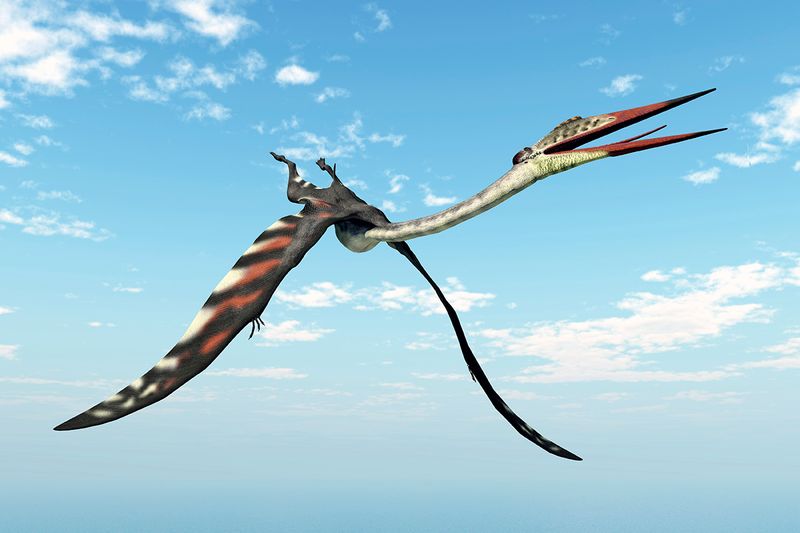
When it came to dining, pterosaurs were not the picky eaters of the prehistoric world. Their diet was as varied as a buffet menu, ranging from fish to small terrestrial creatures. Imagine a creature soaring over an ancient ocean, its keen eyes spotting a glint of silver beneath the waves.
With precision akin to an Olympic diver, the pterosaur would dive down and snatch its prey, showcasing its incredible hunting prowess. Pterosaurs were equipped with a variety of beak shapes and sizes, each adapted to their specific dietary needs.
Some had long, slender beaks perfect for fishing, while others had robust, powerful jaws suited for crunching through tougher prey. This adaptability in their feeding habits allowed them to thrive in diverse environments, from coastal areas to inland regions.
Their hunting techniques were as varied as their diet, employing strategies that would make any predator envious. Whether skimming the surface of the water or snatching prey mid-flight, pterosaurs were adept hunters.
So, next time you watch a bird swoop down for its meal, spare a thought for its ancient relatives, the pterosaurs, who were the original masters of the hunt.
3. Pterosaur Reproduction And Nurturing
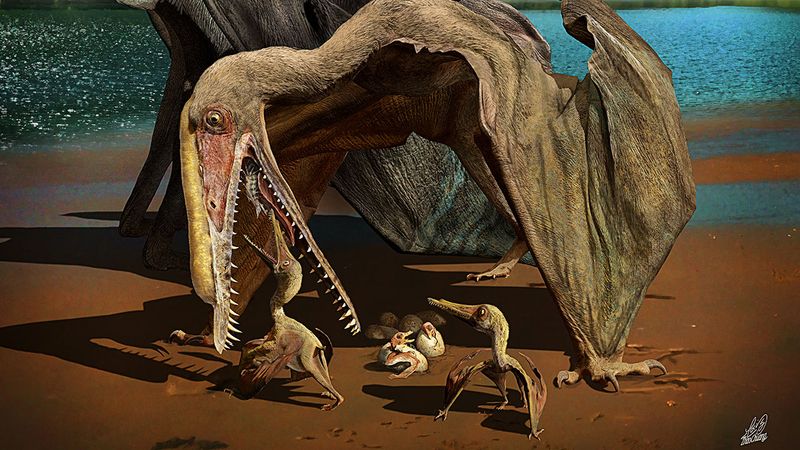
Pterosaur reproduction was a blend of strategy and care that would put some modern animals to shame. These ancient flyers were not just about gliding through the skies; they also knew how to ensure the continuation of their lineage.
Imagine a pterosaur carefully selecting a cliffside, the perfect nursery with a view, to lay its eggs. These creatures were strategic planners, choosing locations that offered protection from predators and harsh environmental conditions.
The nests were thoughtfully constructed, often using materials like sand and vegetation to create a safe haven for their offspring. Once the eggs were laid, the nurturing didn’t stop there. Pterosaur parents might have been quite attentive, ensuring that their young had the best start in life.
Fossil evidence suggests that some species even cared for their young post-hatching, a behavior that speaks volumes about their social structure. This commitment to their progeny ensured that pterosaurs were not just fleeting wonders of flight but enduring inhabitants of the prehistoric skies.
The next time you hear about a bird’s nesting habits, remember that these aerial pioneers laid the groundwork for parental care in flighted creatures.
4. Pterosaur Size Variability
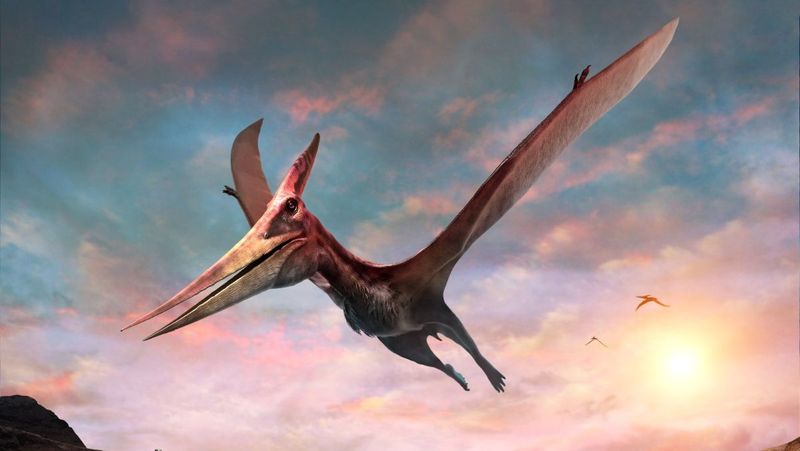
When it comes to size, pterosaurs were the Goldilocks of the prehistoric world: some were big, some were small, and some were just right.
From the colossal Quetzalcoatlus, towering over small aircraft, to the diminutive Nemicolopterus, barely larger than a sparrow, these creatures came in all shapes and sizes. Their size variability was not just for show; it was a result of millions of years of evolution, adapting them to thrive in different ecological niches.
The giants of the pterosaur world, like Quetzalcoatlus, were the heavyweights of the skies, capable of long-distance travel across continents. Their enormous wingspans allowed them to glide effortlessly, conserving energy as they traversed vast landscapes.
On the other hand, smaller pterosaurs were agile and fast, adept at navigating dense forests and capturing quick-moving prey.
This diverse range of sizes highlights the adaptability and resilience of pterosaurs, enabling them to outcompete other species for resources. So, the next time you marvel at a soaring eagle or a tiny hummingbird, remember their ancient relatives, whose size diversity was as remarkable as their flying prowess.
5. Pterosaur Skull And Teeth
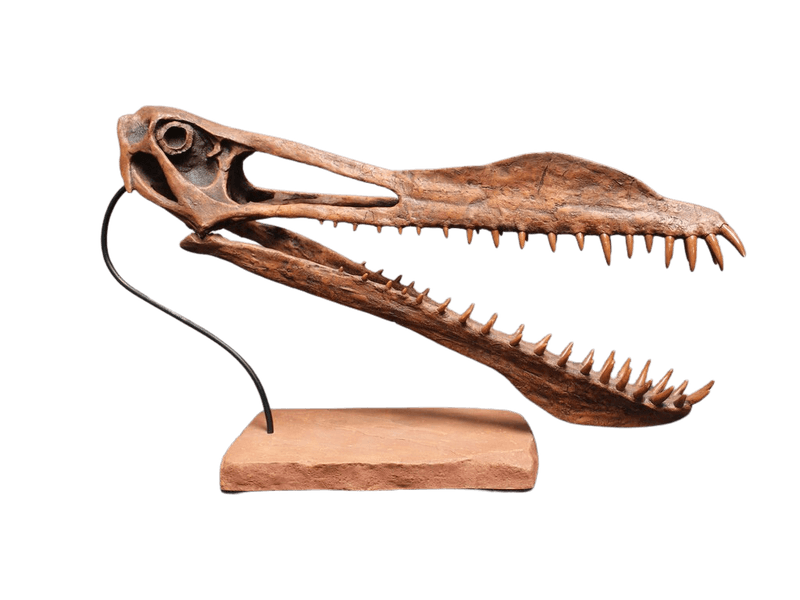
A pterosaur’s skull was a masterpiece of aerodynamic design combined with dental diversity that would make any dentist’s jaw drop. These creatures had skulls that were not only streamlined for flight but also packed with teeth varying as much as a gourmet buffet.
Imagine a head designed to slice through the air with minimal resistance, housing a variety of teeth suited for different dietary adventures. Some pterosaurs boasted long, needle-like teeth, perfect for snaring slippery fish from ancient waters.
Others had broader, more robust teeth, ideal for crunching the hard shells of crustaceans or other tough prey. This dental diversity allowed them to exploit a wide range of food sources, showing just how resourceful these prehistoric aviators were.
Their skull structure also played a crucial role in their sensory capabilities. Large eye sockets suggest excellent vision, which was vital for spotting prey from great heights. The next time you brush your teeth, spare a thought for pterosaurs and their incredible dental adaptations, which made them efficient hunters and survivors of their time.
6. Pterosaur Flight Mechanics
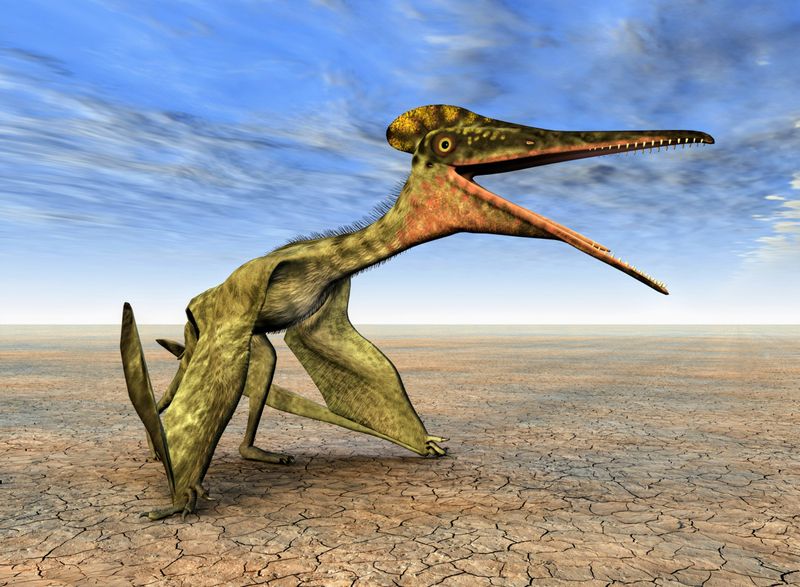
The mechanics of pterosaur flight were a blend of nature’s engineering and the art of defying gravity. These prehistoric aviators didn’t just flap their wings and hope for the best; they were masters of aerodynamics.
Imagine a creature that understood the nuances of lift, drag, and thrust long before humans even dreamt of flying. Pterosaurs utilized their elongated wings to generate lift efficiently, allowing them to glide gracefully through the skies.
Their lightweight bones and muscular build provided the perfect balance between strength and agility. This construction enabled them to execute precise maneuvers, making them adept hunters and travelers.
Their flight wasn’t just about getting from point A to point B; it was an art form perfected over millions of years. Whether riding thermal currents or performing acrobatic twists, pterosaurs were the original stunt pilots.
As you watch a modern plane soar overhead, remember that pterosaurs mastered these mechanics with nothing but bone, muscle, and a bit of evolutionary ingenuity.
7. Pterosaur Fossil Discoveries
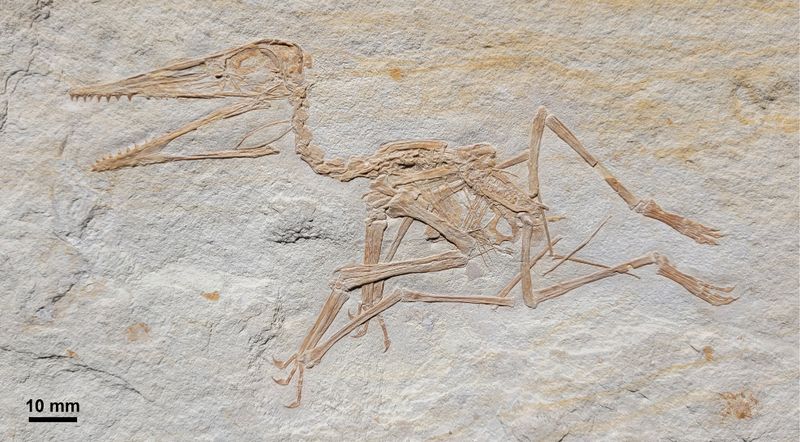
The discovery of pterosaur fossils is like opening a time capsule to a world where giants ruled the skies. These fossils, scattered across the globe, have provided invaluable insights into the lives of these extraordinary creatures.
Imagine the excitement of unearthing a perfectly preserved pterosaur skeleton, each bone telling a story of flight and survival. Fossils have been found in diverse locations, from the deserts of North America to the lush landscapes of Europe and Asia.
These discoveries have not only expanded our understanding of their geographical distribution but also shed light on their evolution and diversity. Each fossil site is a treasure trove of information, revealing the adaptations pterosaurs developed over millions of years.
The study of these fossils continues to captivate paleontologists, offering glimpses into the prehistoric past. Next time you see a fossil exhibit, remember the pterosaurs who once soared above, leaving behind a legacy etched in stone.
8. Pterosaur Extinction
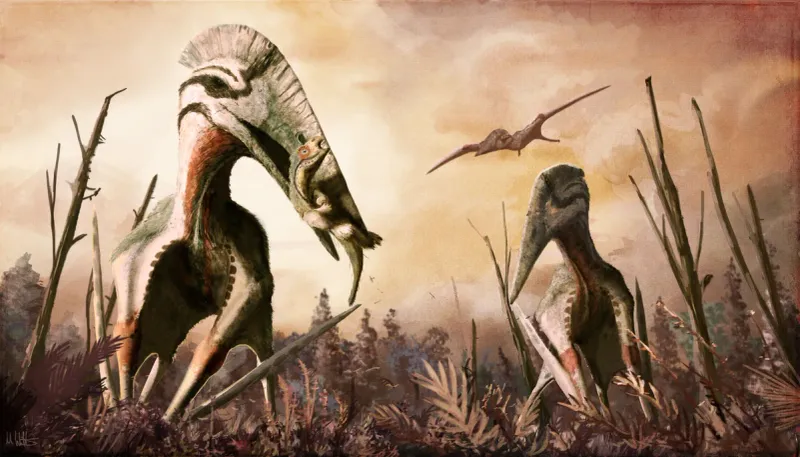
The extinction of pterosaurs is a tale as dramatic as any blockbuster movie, featuring a cast of cosmic events and earthly upheavals. These majestic flyers, who once dominated the skies, met their end around 66 million years ago in a mass extinction event that also claimed the dinosaurs.
Imagine a world suddenly turned chaotic by massive volcanic eruptions and the impact of a colossal asteroid. Despite their mastery of the skies, pterosaurs were not immune to the dramatic shifts in climate and habitat that followed these cataclysmic events.
The cooling temperatures and the resultant decline in food sources likely played a significant role in their downfall. It’s a poignant reminder of the fragility of even the most dominant species. Their extinction paved the way for the rise of modern birds, who inherited the skies from their ancient cousins.
The next time you enjoy a peaceful sunrise, remember the pterosaurs, whose skies once rumbled with volcanic fury and celestial impacts.
9. Pterosaurs And Modern Birds
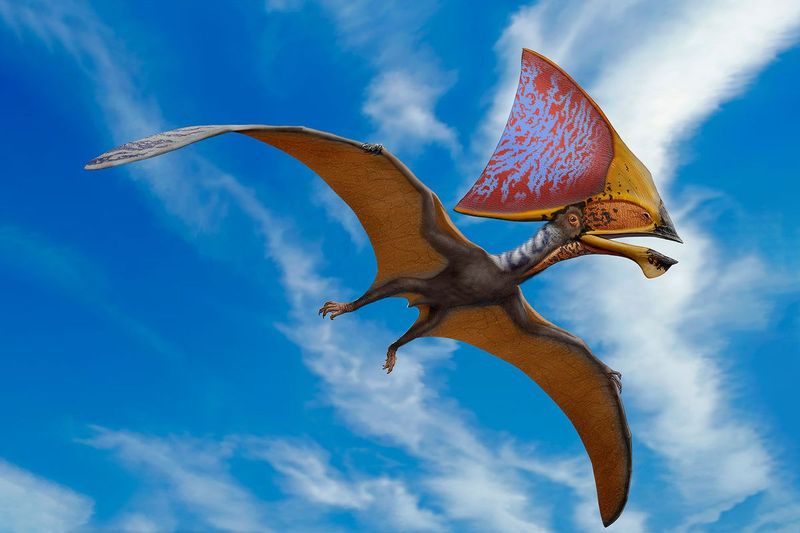
Though separated by millions of years, pterosaurs and modern birds share a fascinating evolutionary narrative. These ancient aviators were not the ancestors of today’s birds, but they paved the runway, so to speak, for avian evolution.
Imagine a family reunion where the guests are separated by epochs, yet share tales of the skies. Pterosaurs and birds both evolved flight independently, a testament to nature’s ingenuity in problem-solving.
While birds developed feathers, pterosaurs relied on their membranous wings for aerial mastery. Despite their differences, both share common adaptations like hollow bones for reduced weight and keen eyesight for spotting prey.
This parallel evolution highlights the diverse paths life can take to conquer the skies. So, next time you watch birds in flight, tip your hat to their distant relatives, the pterosaurs, who once ruled the heavens in their own unique way.
10. Pterosaur Cultural Impact
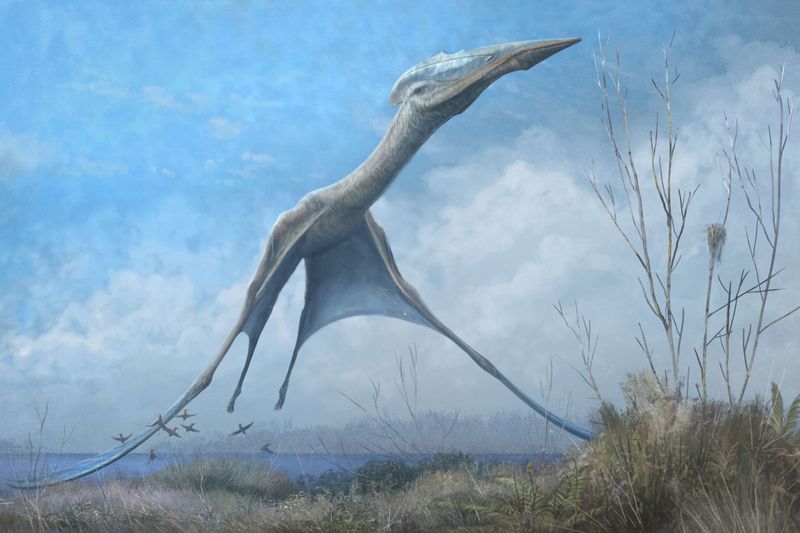
Pterosaurs have captured the human imagination, soaring not just through ancient skies but also into our cultural consciousness. From dragon myths to the silver screen, they’ve left an indelible mark on art and storytelling.
Imagine ancient civilizations interpreting pterosaur fossils as evidence of dragons, weaving them into mythologies that persist to this day. In more recent times, these creatures have taken flight in popular media, starring in films and documentaries that bring their ancient world to life.
Their iconic silhouettes against a setting sun have become symbolic of prehistoric majesty and mystery. This cultural fascination is a testament to their enduring allure, bridging the gap between science and imagination.
Whether as mythical beasts or cinematic stars, pterosaurs continue to inspire awe and curiosity. The next time you encounter a dragon in a story, remember the real-life legends that once graced the skies and fueled our creative spirits.
11. Pterosaur Misconceptions
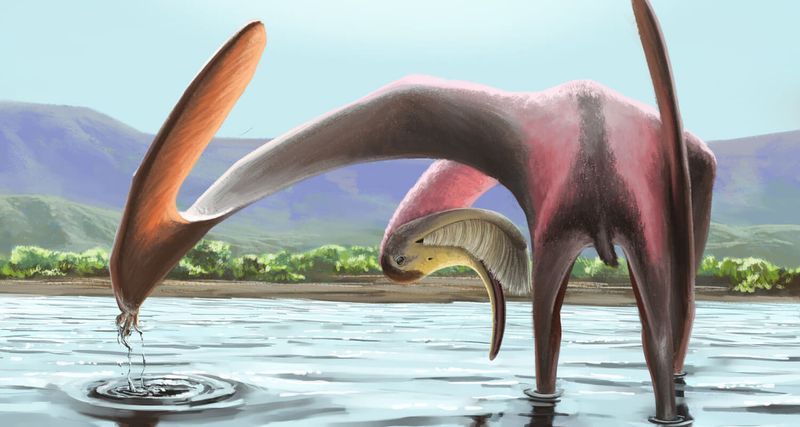
Pterosaurs often find themselves at the center of misconceptions that are as widespread as they are amusing. For starters, they are frequently misidentified as dinosaurs, much to the chagrin of paleontologists everywhere.
Imagine a family reunion where pterosaurs keep insisting, “We’re not dinosaurs!” yet nobody listens. These creatures were a distinct group of flying reptiles, sharing the Mesozoic Era with dinosaurs rather than being part of them. Another common myth is that all pterosaurs were enormous, bat-like terrors.
In reality, they varied greatly in size and shape, adapted to different ecological niches. These misunderstandings serve as a reminder of the complexities of prehistoric life and the importance of scientific accuracy in unraveling Earth’s past.
So, next time someone calls a pterosaur a dinosaur, you can confidently set the record straight and celebrate their unique place in history.

